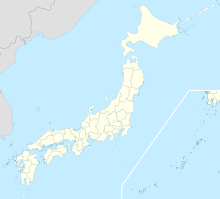Asuka Historical Museum
| 飛鳥資料館 | |

Asuka Historical Museum
|
|
| Established | 1975 |
|---|---|
| Location | Okuyama, Asuka, Nara Prefecture, Japan |
| Coordinates | 34°29′04″N 135°49′30″E / 34.484504°N 135.824962°E |
| Type | Historical museum |
| Director | Keiji Matsumura |
| Curator | Shinji Katō |
| Public transit access | By bus from Kashiharajingū-mae Station, Asuka Station, Nara Sakurai Station, or Yamato-Yagi Station |
| Nearest car park | On site (no charge) |
| Website |
Asuka Historical Museum 飛鳥資料館(Japanese) |
The Asuka Historical Museum (飛鳥資料館 Asuka Shiryōkan?) is a historical museum in Okuyama, Asuka, Nara Prefecture, Japan. The museum was founded in 1975 and is a unit of the Nara National Research Institute for Cultural Properties.
The Asuka Historical Museum primarily preserves and exhibits materials from the 6th to 8th centuries, specifically from the Asuka period (538–710) of Japanese history. Its collection also includes materials from the late Kofun period (250–538) and Nara period (710–794). Unlike other regional museums which house well-known materials from the early periods of Japanese history, Asuka Historical Museum exhibits materials from recent, local excavations. The Asuka Historical Museum is a repository of materials excavated by the Department of Imperial Palace Sites Investigations of the Nara National Research Institute for Cultural Properties. Its collections center on materials from the Asuka, Fujiwara, and Heijō palaces.
The Asuka Historical Museum houses regular exhibits in two halls. Exhibit Hall 1 focuses on materials associated with the Asuka Palace and the Soga clan, along with Asuka-dera, Kawara-dera, and the Takamatsuzuka and Kitora tumuli. Exhibit Hall 2 features excavated materials from the Yamada-dera cloister, which was built by Soga no Kurayamada no Ishikawamaro (d. 649), a grandson of Soga no Umako (551?– 626). The gardens of the museum house reproductions of large-scale rock carvings and statues from the Asuka period. Special exhibits are held in the spring and fall, and the museum has a small library.
...
Wikipedia

